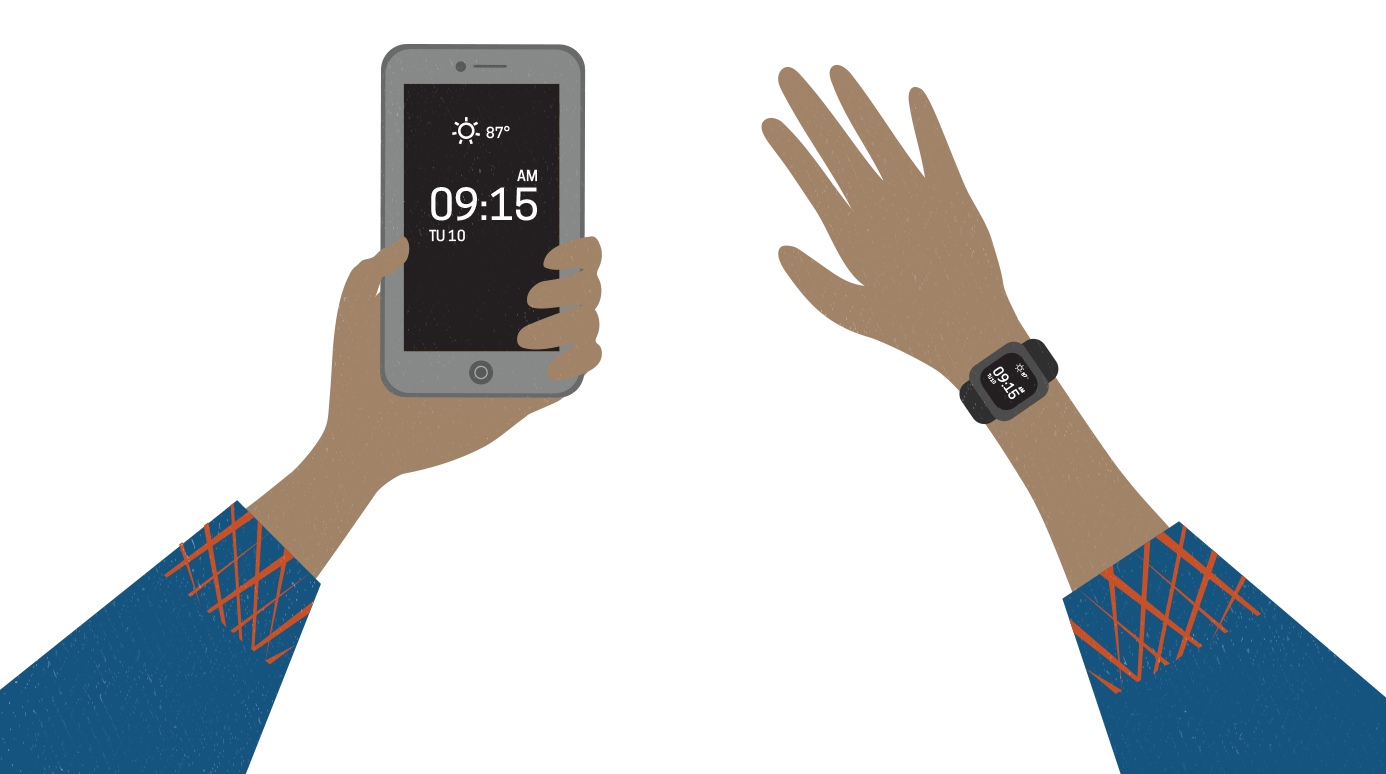


Have you ever heard someone mention wearable technology but weren't quite sure what it meant? Simply put, wearable technology is a general term for a group of devices—including fitness trackers and smartwatches—that are designed to be worn throughout the day. These devices are often called wearables for short.
Wearables have become increasingly popular over the past few years, but the basic idea is nothing new. For example, if you've ever worn a wristwatch, you've already used a simple kind of wearable. Today's wearables can actually connect with your existing devices, like computers and smartphones, which means they can do a lot of interesting things.
Whether you're training for a marathon or are just trying to be more active, these devices can help you get a better understanding of your daily activity. They can track the number of steps you take, your average heart rate, how long you sleep, and more. This data can then be synced with another device, which allows you to see trends and patterns in your activity. For example, you could find out how far you've walked over the past week or estimate how many calories you've burned in a day.
Fitness trackers are available in a range of prices and form factors, depending on your needs. Basic models that clip onto your belt or shoe can cost as little as $50, but other models—such as wristbands and even jewelry—can be more expensive. Some of the most popular brands of fitness trackers include Fitbit, Basis, and Misfit.

If you have a smartphone, you're probably used to receiving a lot of different notifications, like emails, text messages, and phone calls. But if you don't like looking at your phone throughout the day, a smartwatch may be able to help. These devices can be synced with your smartphone, which allows you to see notifications on your wrist at a glance. Most smartwatches can also be used as simple fitness trackers, but they're a lot more expensive. The average smartwatch starts at around $200.
Most smartwatches rely on a smartphone to function, which also means the model you choose will depend on your phone. For example, the Apple Watch can only be synced with an iPhone, while Android Wear devices—such as the Moto 360 and Samsung Gear—can only be connected to Android phones. There are some smartwatches that can be synced with just about any smartphone—like the Pebble—but they also tend to have fewer features than the models listed above.
Safety wearables are devices that are designed to help you in situations where you feel threatened or in danger. They're sometimes disguised as jewelry so they can be used in a discreet way without letting a potential attacker know what the user is doing. Most are operated by a button that sends an alert to others, sounds a loud alarm, or both.

The alerts they send can either be pre-programmed texts or recorded voice messages. A lot of them also have built-in GPS, allowing you to immediately share your location with friends, family, nearby people, or even the police.
/en/wearables/pros-and-cons-of-wearable-technology/content/